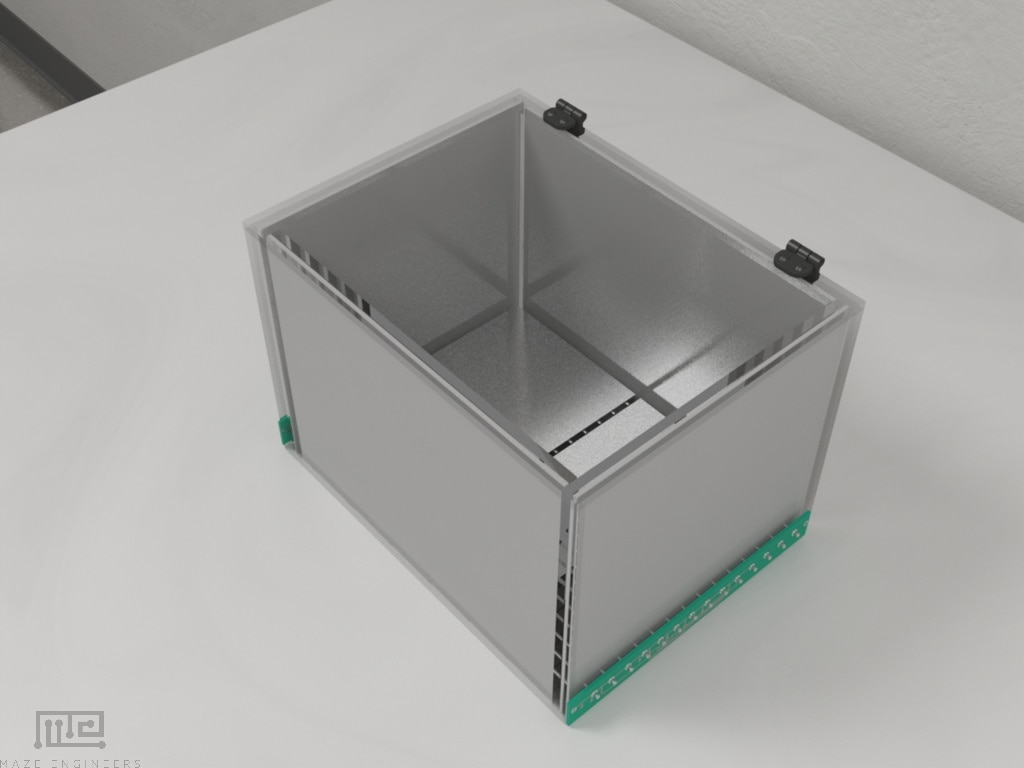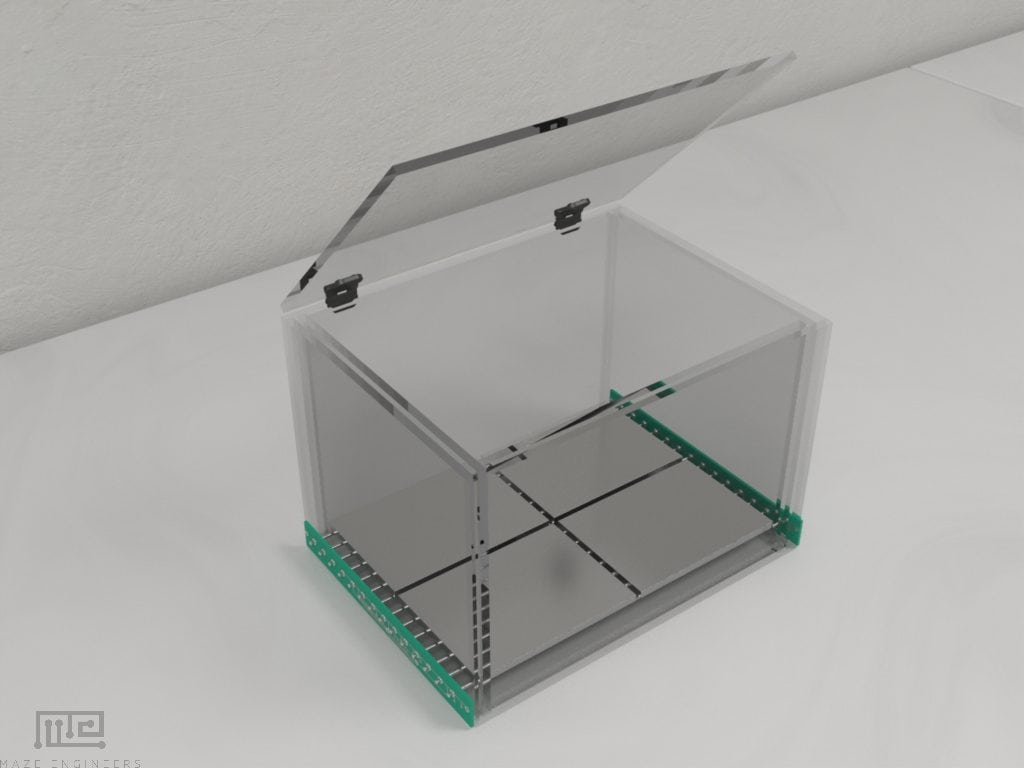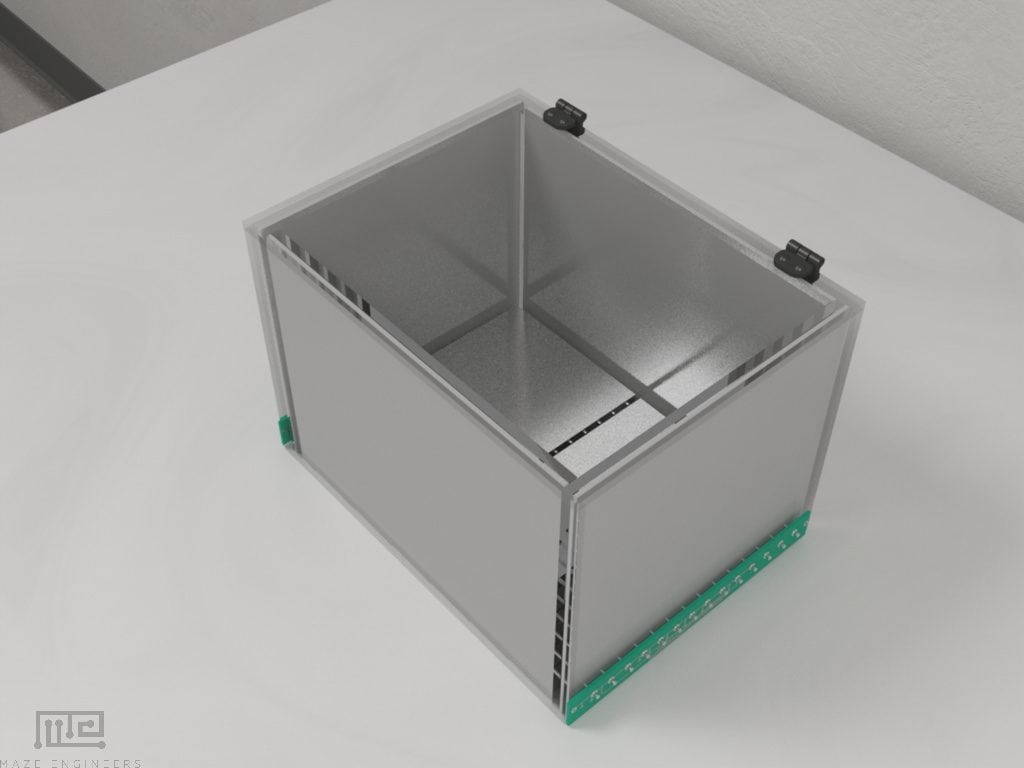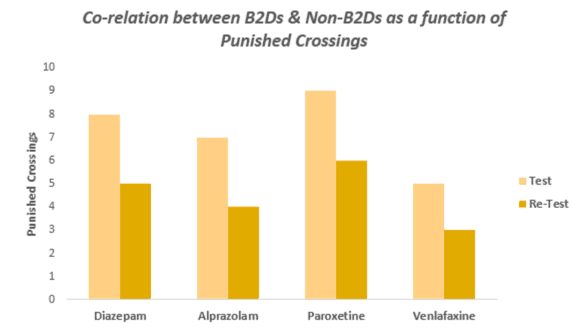Description
Aron’s test is an elegant yet simple and economical solution for testing the effect of anxiolytic compounds in mice and rats. Mild electric foot shocks cause punishment while rodents attempt to explore their novel environment. The MazeEngineers 4 Plate test allows for shock at highly discriminatory doses in 4 separate quadrants at your control. Data is collected with our Conductor Software. Your order comes with an easy to open lid. Interchangable walls can be included in your order.
- A simple modification of plates can be made to interchange shock with heat plates. Please inquire for more details.
Features
Take advantage of Neuralynx, Ethovision Integration, SMS and Email integration with the Conductor Science Software. No I/O Boxes Required
Price & Dimensions
Mouse
$ 3900
Per Month- Length: 18cm
- Height: 25cm
- Height: 16cm
Rat
$ 4900
Per Month- Length: 27cm
- Height: 37cm
- Height: 24cm
Documentation
Introduction
The Aron test or four plates test (FPT) is an animal model of anxiety-based on spontaneous response (Aron et al., 1971). The test animal is introduced to this novel environment i.e. the cage where the exploration of it is suppressed by the delivery of a mild electric foot shock contingent to quadrant crossing. The only way to averse the shocks is to stay motionless on any one of the quadrant steel plate. The FPT is based on passive avoidance where mice must stop moving to avoid electric foot shocks (Boissier et al. 1968). This test represents a model of conditioned fear and has the advantage of being a simple procedure.
The anti-nociceptive system has been reported to be activated by a variety of stressful stimuli such as footshock. Anti-depressant compounds can either alleviate or reduce anxiety level as well as pain sensitivity level. The FPT test is an excellent model to observe and determine those compounds’ effect and its level on animals like rodent before human testing. Also FPT test can offer both quantitative as well as qualitative picture on the different way these compounds react when the dosage, area of injection and environment condition are varied.
It is a simple, ready-to-start yet very effective procedure. Following habituation period, the animal is subjected to an electric shock when crossing (transition) from one plate to another, i.e. two legs on one plate and two legs on another. The number of punished crossings is generally calculated for a period of 60 s (Dunham and Mya 1957). For example, a substance with anxiolytic properties induces an increase in the number of punished passages.
Apparatus & Equipment
The Aron Test apparatus is a white plastic cage of 18 x 25 x 16 cm dimension, with a transparent Perspex lid on top for preventing escape behavior in the test animal. The floor of the cage has four identical rectangular metal (steel) plates of dimension (8×11 cm), separated from each other by a 4mm gap. These plates are connected to an external device that can generate electric shock i.e. footshocks.
The shocker unit can generate square pulse of an intensity anywhere between 0 – 3 mA for a variable period of 0-10 sec. It needs to be handled manually.
Training Protocol
Pre-training for Four Plate Test
For this test, Male Swiss mice (Janvier, France) (weighing on average 20 ± 2 g on the day of the study) were used in the original study, but any commonly used strain including C56BL/J can be used. Mice are typically housed in groups of 18 for a minimum of one week prior to experiments in plastic cages (44 cm × 30 cm × 17 cm) on 12:12 light/dark cycle and at a constant ambient temperature of 21±1°C and 50% humidity.
Depending on the requirement, the animal (mice) can be chosen to be naive or experienced (– if submitted to the test 24 hour previously) or both. The experimental groups are typically composed of 8-12 mice.
Test- Retest Protocol
After a short period of habituation with the apparatus (15 seconds), the subjects receive electric shocks every time a plate is crossed.
The number of plates crossed by the subjects is recorded for a 1-minute test period. (Dunham & Mya 1957).
The testing procedure is divided into two separate sessions, namely test or session 1 and retest or session 2. The retest is performed 24 hours following the test.
The results obtained from the test and retest in a mouse are compared to assess the overall performance of the mouse.
Method 1
The subjects are indiscriminately divided into four groups. The first group received saline treatment for both test and retest. The second group received saline treatment for the test and test treatment for the retest. The third group received test treatment for the test and saline treatment for the retest. The fourth group received test treatment for both test and retest.
Saline or test treatment should be administered via intraperitoneal route half an hour before the test/retest.
Method 2
An alternative method is to divide subjects into two groups. During test/session 1, only saline treatment should be given. For the retest/session 2, both the saline or test treatment can be given.
Like Method 1, Saline or test treatment should be administered via intraperitoneal route half an hour before the test/retest.
Modifications
Hot plate test developed by Jacob et.al 1974 is identical to the four plate test paradigm.
The significant modification was the utilization of heat plates which served as aversive stimuli instead of electric shocks.
Hot plate test was designed to counter the perplexed results obtained from the four plate test with DOI effect.
The environment, dosage of compounds, injection points and test span can be altered as per requirement and test objective.
Sample Data
Data obtained from the Aron or FPT test is generally visualized by graphical plotting of the number of punished passage or crossings in one minute against various compounds.
For testing/season 1, the subjects are incorporated with saline treatment and for retesting/season, the subjects are incorporated with treatments.
It is evident from the above graph that all the treatments fail to decrease the levels of anxiety in the subjects during retesting. The possible reason may be the passive avoidance acquisition in subjects.
Strengths and Limitations
It is a simple test that can be easily modified as per objective, makes it an effective anxiety and anti -nociceptive response tester for compounds.
The four-plates test (FPT), has the advantage of allowing the detection of anxiolytic effect not only of BZDs, but also of other non-BZDs anxiolytic compounds such as SSRIs (Hascoët et al. 2000).
It helps distinguish between modification of pain-tolerance level or induction of anxiolytic effect due to certain treatments.
FPT allows mice to acquire passive avoidance behavior in situations where certain treatments do not have an effect on memory.
FPT coupled with other anxiety tests like hot-plate test offer insight into working pathways of neurotransmitters for pain and aversive mechanism.
Punishment induces strong behavioral inhibition and reinforced learning (Hascoët et al. 1997), so using FPT for test-retest protocol likely to showcase different result.
Except DOI, BZDs and anti-depressants exerts opposing effect in naïve and experienced mice under FPT test.
Prior experience of FPT reduces or abolishes the anxiolytic efficacy of BZD receptor agonists like other anxiety test model.
The modified FPT is unable to distinguish the anxiolytic effect of BZDs from that of anti-depressants.
Summary and Key Points
- Retesting of same animal in FPT may produce different result
- Effective to test theorized neural pathways for anxiety and pain
- An elegant yet simple and economical solution for testing the effect of anxiolytic treatments in mice
- Punishment based conflict test. This model is based on the suppression, by the delivery of mild electric foot shocks, of the exploration of novel surroundings – a characteristic of a simple innate ongoing behavior of animal
- Normally the effect of Benzodiazepines, anti-depressant and pain-relieving compounds are tested through it, but novel anxiolytic compounds can also be evaluated using FTP.
- The number of crossing or passage through the four plates in one minute is what need to be marked
- Data acquired by various compounds with different degree of concentration are graphed and compared against each other





